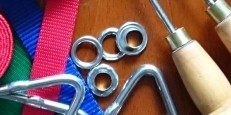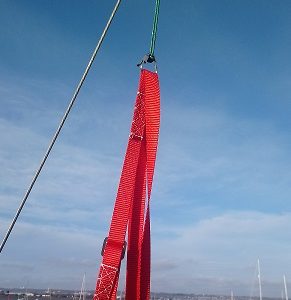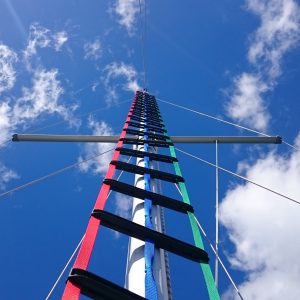If you're going to be working at height, ensuring your safety is paramount, so we do everything we can to make sure your risk is minimised.
Every ladder we send out is made with care and rigorously inspected. An Inspection Checklist is completed before packing and dispatch.
We also use a traceable batch system for all parts and materials.
We strongly recommend the use of a good quality, full-body harness and a safety line, even better in combination with our Pole Strap.
We also strongly recommend, for this purpose, using a separate halyard from the one used to hoist the ladder.
We recommend using a bowline to secure the hoisting halyard to the ladder. This eliminates several potential points of failure.
It is important to check the suitability and condition of all halyards before use for mast climbing, and check both portions running inside the mast and outside for chaffing or fraying.
Our Safety Checklist
Our Instructions include a checklist to remind the user of important points before climbing.
Most of these points are fairly straight forward, however there are a number of possible variations with regard to Safety Lines.
Safety Lines
We’ve used and thoroughly tested various safety line arrangements.
Our by-far favourite is a full body harness attached with a looped or circular safety line to a spare halyard using a sliding Klemheist, and a Pole Strap.
This enables safe climbing unassisted/solo. Not only does this combination increase the convenience of owning a Kinleven Marine Mast Ladder, it can be safer than relying on a shipmate to tail you on a safety line. If you're not alone, it frees your helper up, to be of more use helping get the job done if needed.
A Pole Strap or similar arrangement enables hands free working, securely detaching and re-attaching safety lines when passing spreaders, and resting arms while aloft.
At height and in extreme conditions, avoiding excessive discomfort and staying as comfortable as possible, is a safety issue!




